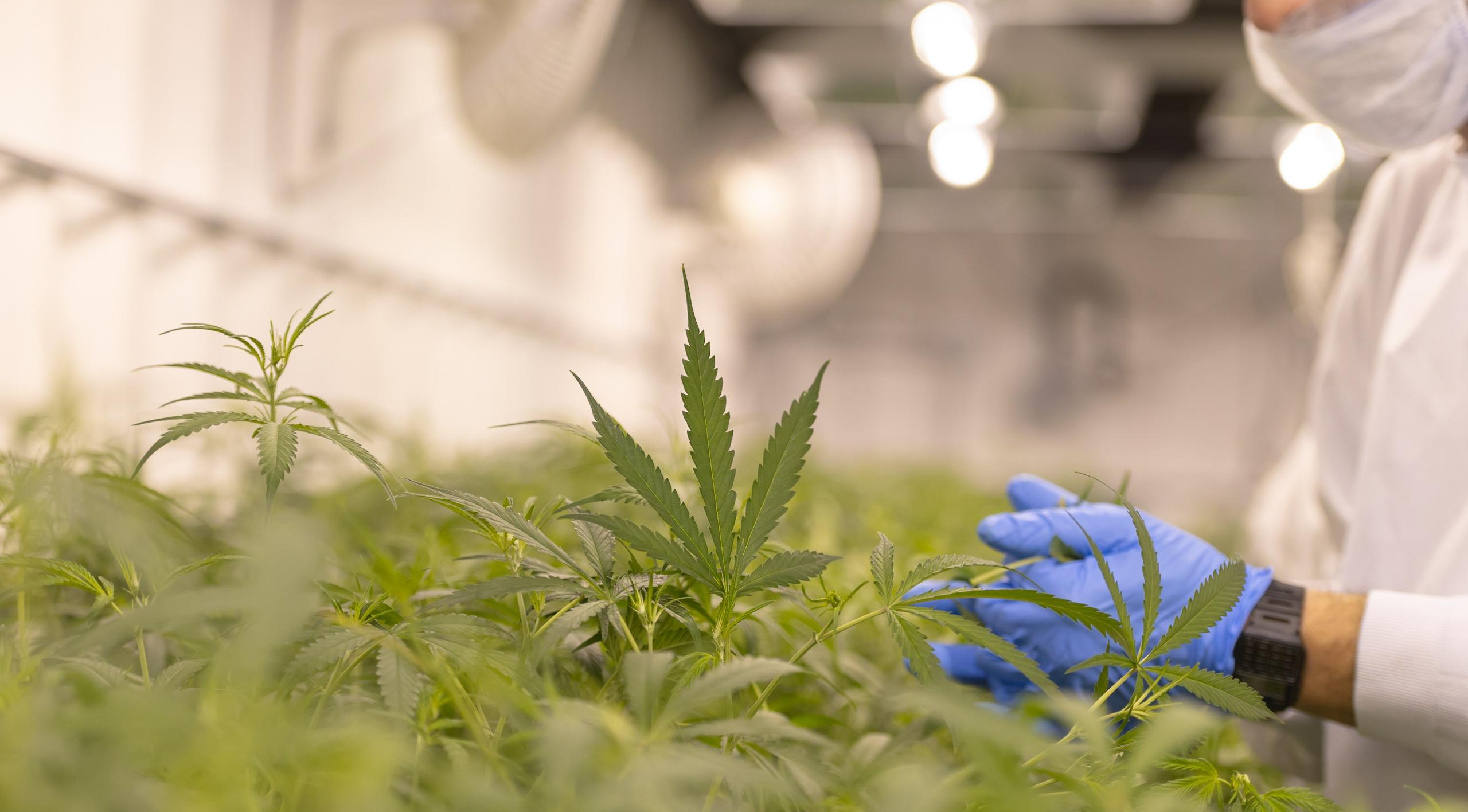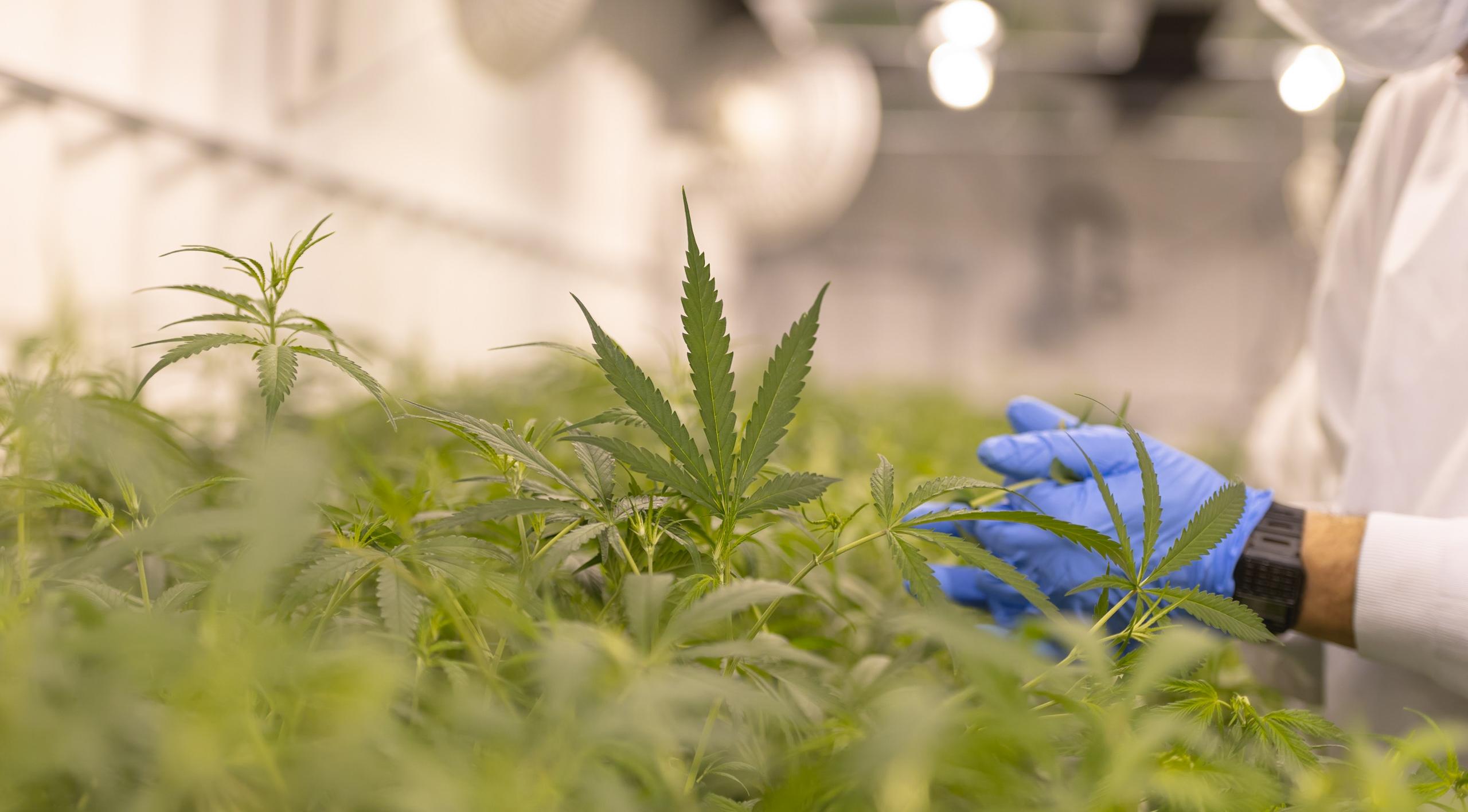
Why Cannabis Companies Should Take a Page from the CPG Playbook
-
bookmark
-
print



We’re approaching four years of legalized recreational cannabis in Canada. In that time, we’ve seen some early missteps regarding corporate strategies, but we’ve also seen how the industry has been willing to adapt and mature.
As the industry continues to evolve, it’s beneficial for business owners to look back at some of the missteps some early entrants into the market made and how companies can prepare for future growth opportunities.
False assumptions
In the first year of legalization, many assumed that the most successful companies would be the ones able to maximize their cultivation capacities the fastest. That assumption turned out to be incorrect.
First off, the consumer transition from the legacy to the legal market wasn't instantaneous. This was in part because some early players in the legal space didn’t put enough focus on product quality as they focused on an “if you grow it, it will sell” approach to the legal market. Meanwhile, the cultivators that devoted significant expenses to building huge cultivation facilities—and hiring large staffs to operate them—couldn’t generate sufficient revenue to cover their operating expenses and burned through their cash, leading to liquidity issues.
This allowed the legacy market to continue to thrive as providers kept focusing on delivering the quality their consumers demanded, whether in terms of taste, THC levels or terpene concentrations, at affordable prices. It also created an opportunity for smaller craft cultivators to flourish. They didn’t have large cultivating facilities—or the huge expenses that came with running them—but they were able to focus on growing small batch, quality products.
Another assumption that did not materialize was that cannabis 2.0 products—THC and CBD-infused edibles, beverages and the like—would explode and dominate the market. That turned out not to be the case as lower THC allowances in these products failed to attract experienced cannabis users. In addition, cannabis stigma and higher prices relative to the legacy market made these products unappealing.
Finally, there was an expectation that once cannabis became legal, new consumers would enter the market. The assumption was that the only thing keeping people away from cannabis was that it was illegal, or that alcohol consumers would naturally adopt cannabis. This also turned out to be false.
Some of the early entrants into the industry underestimated the lingering negative stigma attached to cannabis—one that isn’t easily erased because of legality. As a result, the industry missed the opportunity to educate consumers on other cannabinoids that do not get one high.
The CPG method
It’s now clear that the strategy of immediately scaling up growing operations for an influx of new and legacy cannabis users didn’t work. Now, we’re seeing more players build their business models around the consumer packaged goods, or CPG, formula.
Generally speaking, CPG companies don't assume that a product is going to fly off the shelves upon launch. They conduct research then subsequently develop products. From there, these companies develop a strategy and test it before scaling up. Assuming the strategy doesn't work, they pivot quickly to adjust it. It comes down to being able to fail quickly so that one doesn’t continue to invest in products that aren’t successful.
For the cannabis market, the “CPG formula” means finding out what products and quality consumers want, then scaling up only when there’s clear evidence of an increase in demand. Ultimately, it’s about developing a business model that allows you to scale with growing market opportunities while being flexible enough to change course quickly when product rollouts aren’t successful or to capitalize on new opportunities.
Exploring complementary industries
In many ways, cannabis is a potential disruptor to other industries, and that’s providing opportunities for cultivators to create successful partnerships with companies in complementary industries, including food and beverage, confectionaries, home goods (such as candles), and health and beauty. We’re already seeing many large beverage companies investing in cannabis-related research and development. Several U.S.-based entities are doing their R&D work in Canada as cannabis is still federally illegal in the U.S.
At present, most cannabis companies are still largely pre-cash flow. That’s why the companies that are more likely to secure senior debt financing and are appealing to potential partners are the ones generating positive cash flow and have leadership teams with a CPG mindset. In fact, we’ve seen several cannabis firms shuffle their executive teams to bring in executives from CPG companies to change the way they operate.
Companies that are able to demonstrate a more robust CPG model would be more attractive to potential partners because they have a better grasp of how to scale their businesses based on market conditions and consumer demand. Also, they've structured their businesses so that they can scale up based on gradual increases in demand. The key is to understand how those ancillary industries target a particular clientele and how they perform product development.
While we saw early missteps regarding corporate strategies soon after legalization, we are encouraged by the industry’s long-term development prospects, particularly as it matures and shifts to a more traditional CPG model. As opportunities for entering supplementary markets become more plentiful, we expect this to fuel growth and look forward to many firms becoming cash flow positive.

Allen Benjamin
Managing Director and National Lead, Cannabis & Emerging Industries, Commercial Bank, Canada
Allen is a seasoned professional with 20 years of experience across multiple industries, including financial services, in Canada and the Caribbean. As the…(..)
View Full Profile >We’re approaching four years of legalized recreational cannabis in Canada. In that time, we’ve seen some early missteps regarding corporate strategies, but we’ve also seen how the industry has been willing to adapt and mature.
As the industry continues to evolve, it’s beneficial for business owners to look back at some of the missteps some early entrants into the market made and how companies can prepare for future growth opportunities.
False assumptions
In the first year of legalization, many assumed that the most successful companies would be the ones able to maximize their cultivation capacities the fastest. That assumption turned out to be incorrect.
First off, the consumer transition from the legacy to the legal market wasn't instantaneous. This was in part because some early players in the legal space didn’t put enough focus on product quality as they focused on an “if you grow it, it will sell” approach to the legal market. Meanwhile, the cultivators that devoted significant expenses to building huge cultivation facilities—and hiring large staffs to operate them—couldn’t generate sufficient revenue to cover their operating expenses and burned through their cash, leading to liquidity issues.
This allowed the legacy market to continue to thrive as providers kept focusing on delivering the quality their consumers demanded, whether in terms of taste, THC levels or terpene concentrations, at affordable prices. It also created an opportunity for smaller craft cultivators to flourish. They didn’t have large cultivating facilities—or the huge expenses that came with running them—but they were able to focus on growing small batch, quality products.
Another assumption that did not materialize was that cannabis 2.0 products—THC and CBD-infused edibles, beverages and the like—would explode and dominate the market. That turned out not to be the case as lower THC allowances in these products failed to attract experienced cannabis users. In addition, cannabis stigma and higher prices relative to the legacy market made these products unappealing.
Finally, there was an expectation that once cannabis became legal, new consumers would enter the market. The assumption was that the only thing keeping people away from cannabis was that it was illegal, or that alcohol consumers would naturally adopt cannabis. This also turned out to be false.
Some of the early entrants into the industry underestimated the lingering negative stigma attached to cannabis—one that isn’t easily erased because of legality. As a result, the industry missed the opportunity to educate consumers on other cannabinoids that do not get one high.
The CPG method
It’s now clear that the strategy of immediately scaling up growing operations for an influx of new and legacy cannabis users didn’t work. Now, we’re seeing more players build their business models around the consumer packaged goods, or CPG, formula.
Generally speaking, CPG companies don't assume that a product is going to fly off the shelves upon launch. They conduct research then subsequently develop products. From there, these companies develop a strategy and test it before scaling up. Assuming the strategy doesn't work, they pivot quickly to adjust it. It comes down to being able to fail quickly so that one doesn’t continue to invest in products that aren’t successful.
For the cannabis market, the “CPG formula” means finding out what products and quality consumers want, then scaling up only when there’s clear evidence of an increase in demand. Ultimately, it’s about developing a business model that allows you to scale with growing market opportunities while being flexible enough to change course quickly when product rollouts aren’t successful or to capitalize on new opportunities.
Exploring complementary industries
In many ways, cannabis is a potential disruptor to other industries, and that’s providing opportunities for cultivators to create successful partnerships with companies in complementary industries, including food and beverage, confectionaries, home goods (such as candles), and health and beauty. We’re already seeing many large beverage companies investing in cannabis-related research and development. Several U.S.-based entities are doing their R&D work in Canada as cannabis is still federally illegal in the U.S.
At present, most cannabis companies are still largely pre-cash flow. That’s why the companies that are more likely to secure senior debt financing and are appealing to potential partners are the ones generating positive cash flow and have leadership teams with a CPG mindset. In fact, we’ve seen several cannabis firms shuffle their executive teams to bring in executives from CPG companies to change the way they operate.
Companies that are able to demonstrate a more robust CPG model would be more attractive to potential partners because they have a better grasp of how to scale their businesses based on market conditions and consumer demand. Also, they've structured their businesses so that they can scale up based on gradual increases in demand. The key is to understand how those ancillary industries target a particular clientele and how they perform product development.
While we saw early missteps regarding corporate strategies soon after legalization, we are encouraged by the industry’s long-term development prospects, particularly as it matures and shifts to a more traditional CPG model. As opportunities for entering supplementary markets become more plentiful, we expect this to fuel growth and look forward to many firms becoming cash flow positive.
What to Read Next.
Cannabis Industry: What’s Next?
Allen Benjamin | June 24, 2021 | Agriculture, Cannabis And Emerging Industries

A track dedicated to the cannabis industry at BMO’s 16th Annual Farm to Market Conference in May 2021 featured 13 cannabis companies sharing th…
Continue Reading>Related Insights
Tell us three simple things to
customize your experience






Banking products are subject to approval and are provided in Canada by Bank of Montreal, a CDIC Member.
BMO Commercial Bank is a trade name used in Canada by Bank of Montreal, a CDIC member.
Please note important disclosures for content produced by BMO Capital Markets. BMO Capital Markets Regulatory | BMOCMC Fixed Income Commentary Disclosure | BMOCMC FICC Macro Strategy Commentary Disclosure | Research Disclosure Statements
BMO Capital Markets is a trade name used by BMO Financial Group for the wholesale banking businesses of Bank of Montreal, BMO Bank N.A. (member FDIC), Bank of Montreal Europe p.l.c., and Bank of Montreal (China) Co. Ltd, the institutional broker dealer business of BMO Capital Markets Corp. (Member FINRA and SIPC) and the agency broker dealer business of Clearpool Execution Services, LLC (Member FINRA and SIPC) in the U.S. , and the institutional broker dealer businesses of BMO Nesbitt Burns Inc. (Member Canadian Investment Regulatory Organization and Member Canadian Investor Protection Fund) in Canada and Asia, Bank of Montreal Europe p.l.c. (authorised and regulated by the Central Bank of Ireland) in Europe and BMO Capital Markets Limited (authorised and regulated by the Financial Conduct Authority) in the UK and Australia and carbon credit origination, sustainability advisory services and environmental solutions provided by Bank of Montreal, BMO Radicle Inc., and Carbon Farmers Australia Pty Ltd. (ACN 136 799 221 AFSL 430135) in Australia. "Nesbitt Burns" is a registered trademark of BMO Nesbitt Burns Inc, used under license. "BMO Capital Markets" is a trademark of Bank of Montreal, used under license. "BMO (M-Bar roundel symbol)" is a registered trademark of Bank of Montreal, used under license.
® Registered trademark of Bank of Montreal in the United States, Canada and elsewhere.
™ Trademark of Bank of Montreal in the United States and Canada.
The material contained in articles posted on this website is intended as a general market commentary. The opinions, estimates and projections, if any, contained in these articles are those of the authors and may differ from those of other BMO Commercial Bank employees and affiliates. BMO Commercial Bank endeavors to ensure that the contents have been compiled or derived from sources that it believes to be reliable and which it believes contain information and opinions which are accurate and complete. However, the authors and BMO Commercial Bank take no responsibility for any errors or omissions and do not guarantee their accuracy or completeness. These articles are for informational purposes only.
Bank of Montreal and its affiliates do not provide tax, legal or accounting advice. This material has been prepared for informational purposes only, and is not intended to provide, and should not be relied on for, tax, legal or accounting advice. You should consult your own tax, legal and accounting advisors before engaging in any transaction.
Third party web sites may have privacy and security policies different from BMO. Links to other web sites do not imply the endorsement or approval of such web sites. Please review the privacy and security policies of web sites reached through links from BMO web sites.
Please note important disclosures for content produced by BMO Capital Markets. BMO Capital Markets Regulatory | BMOCMC Fixed Income Commentary Disclosure | BMOCMC FICC Macro Strategy Commentary Disclosure | Research Disclosure Statements




